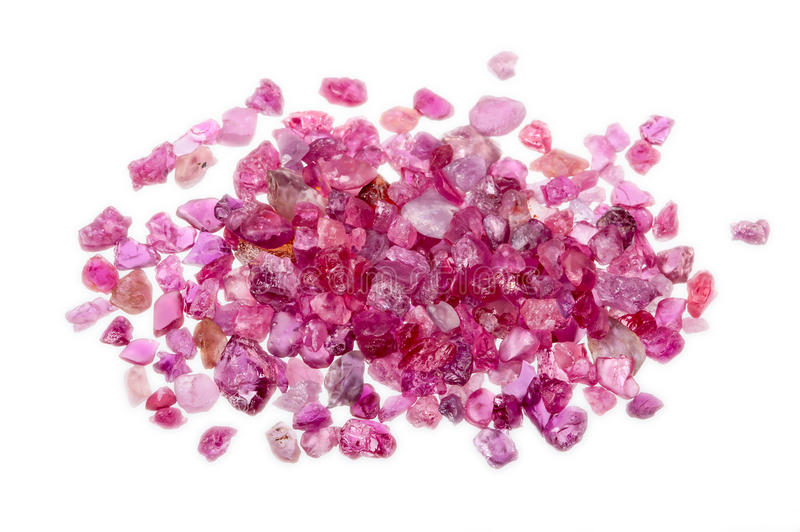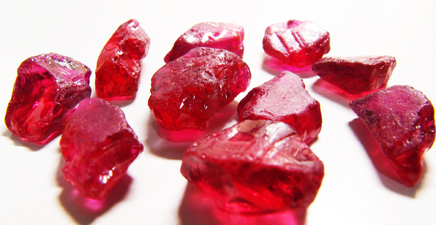Mining Locations

History Of Ruby Mining Techniques Although rubies can be found in many locations, not all areas can be successfully mined. If deposits cannot be mined easily; if they are located in remote, inhospitable, or politically volatile regions; if labor is too costly; or if regulation presents obstacles; there can be no viable mining industry. […]

Rubies from Sri Lanka have long captivated gem enthusiasts with their remarkable beauty, rich color, and historical significance. Known for their vibrant hues ranging from pinkish-red to deep crimson, rubies from Sri Lanka are treasured for their natural brilliance and exceptional clarity. Mined primarily in the gem-rich regions of Ratnapura, these stones are a testament […]

Rubies from Myanmar have long captivated the world with their exceptional beauty, rich history, and legendary status among gemstones. Known for their deep, vibrant red hues often described as “pigeon’s blood,” rubies from Myanmar are considered some of the finest and most valuable in existence. These gems, mined primarily in the Mogok region, are treasured […]

Thailand is known for producing rubies with high clarity and a deep red “Siamese” color. As early as the 15th century, visitors forwarded glowing reports of the fabulous rubies that could be found there. In 1687, the French envoy to Siam reported that the country was “abounding in mines of rubies and sapphires.” He also […]

Cambodia rubies should be noted as almost synonymous with Thailand rubies because the mines for both are located around the same border between the two countries. Moreover, many of Cambodia’s mines were formerly Thailand’s until 1907*, including Pailin. As such, the features of: A deeper, darker red. Appear eye-clean more often than marble-hosted (low iron, […]

Rubies from Vietnam are celebrated for their vivid color and exceptional transparency, making them some of the most sought-after rubies in the world. Found primarily in the Luc Yen and Quy Chau regions, rubies from Vietnam often display a rich, pigeon’s blood red hue that rivals even the finest stones from Myanmar. Known for their […]

Rubies from Laos are gaining recognition for their rich red hues and natural charm, contributing to Southeast Asia’s legacy of fine gemstone sources. Mined mainly in the Huaphan province, rubies from Laos often display deep, vibrant reds that are comparable to those from neighboring Myanmar and Vietnam. These rubies are typically found in alluvial deposits […]

Rubies from Madagascar have emerged as a prominent choice in the gemstone market due to their striking color and natural brilliance. Discovered relatively recently compared to other sources, rubies from Madagascar—especially those from the Andilamena and Vatomandry regions—often exhibit vibrant red to pinkish-red hues with good clarity and size. These gems are admired for their […]

Rubies from Tanzania are renowned for their intense color and natural allure, making them a prized choice among gemstone collectors and jewelry designers alike. Particularly those sourced from the Winza and Longido regions display vibrant red to purplish-red tones, often accompanied by unique internal characteristics that highlight their natural origin. Rubies from Tanzania are gaining […]

Rubies from Kenya are known for their intense color, natural beauty, and growing significance in the global gemstone industry. Primarily sourced from the Mangare area in Baringo County and the John Saul Mine near Tsavo, rubies from Kenya often display deep red to purplish-red tones, sometimes with unique inclusions that highlight their natural origin. These […]

Rubies from Malawi are gaining recognition for their vibrant red hues, natural beauty, and ethical sourcing. Mined primarily from Chimwadzulu Hill, these rubies often feature rich, saturated colors with good clarity and minimal treatment, making them especially appealing to collectors and designers seeking responsibly sourced gemstones. Though lesser known compared to rubies from Myanmar or […]

Common characteristics in rubies produced in Mozambique are: A deeper, darker red. Appear eye-clean more often than marble-hosted (low iron) stones. Lack of fluorescence. While Thailand is more historically associated with these types of characteristics, since both sources are basalt-hosted (meaning high iron, darker rubies) they are capable of producing similar stones in appearance, inclusions, […]

Rubies from Afghanistan are prized for their rich, deep red color and exceptional natural beauty. Primarily sourced from the historic Jegdalek region, these rubies have been known for centuries and were once traded along ancient Silk Road routes. Rubies from Afghanistan often display a vivid crimson hue and are valued for their rarity, especially due […]

Due to the extensive smuggling of Afghan rubies into Pakistan, many do not realize that Pakistan has its own wealth of gems that are underexploited. The ruby deposits here are primary deposits, initially discovered in the 1980s. Like the Afghanistan material, these rubies are mostly cabochan and carving grade. There is small, transparent material under […]
